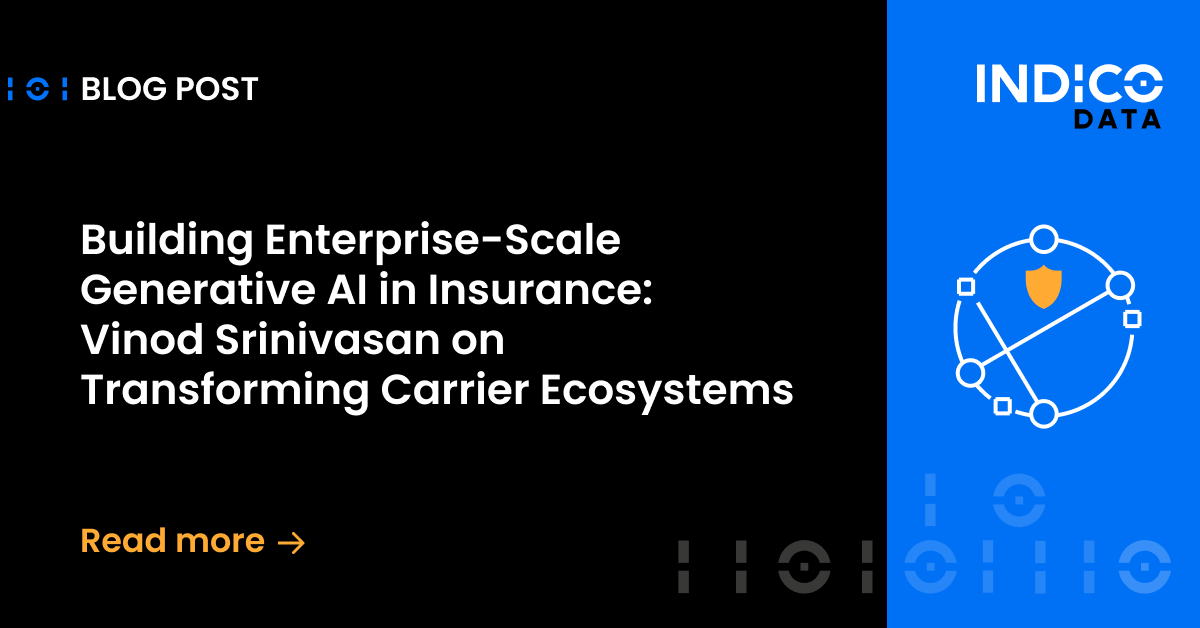While there’s no shortage of hype around artificial intelligence in the insurance industry, in many ways it’s warranted because AI is transformational technology. The key is to be mindful of what AI can and cannot be expected to do.
In this post, with the help of my Unstructured Unlocked podcast partner Michelle Gouveia of Sandbox Industries, we blue sky about the ways AI may change the insurance industry, from automating submission triage to fostering faster decision-making and enhancing data analysis.
Streamlining insurance decision-making and data accessibility
One of the most significant contributions of AI to the insurance sector is streamlining decision-making processes by making data more readily available. With its ability to quickly digest loads of complex data, AI excels at research and forensics. That frees up talented underwriters and claims analysts from much of the grunt work of reading submissions and claims documents to focus on more valuable endeavors – like underwriting policies and processing claims.With AI, there’s really no limit on the quantity of data you can ask it to analyze. For insurance companies, that opens up entire new avenues. Today all the internal data at your disposal comes from policies you actually wrote. But that’s a fraction of the submissions that likely came across the transom.
If you could mine all the data of all the submissions you received but didn’t write (usually due to a lack of capacity, which AI helps cure), you may well uncover valuable nuggets of information. Feeding the data to an analytics engine could help carriers auto-rank submissions, helping you make more informed decisions faster. In short, you can have more assurance that you’re writing the business that is most likely to be profitable.
AI is also adept at handling high complexity but low volume use cases, such as regulatory research. Most insurers don’t have enough of the same sort of request coming from regulators to make developing automation routines for them worthwhile. But research tools powered by generative AI make it possible to conduct ad hoc queries against a large corpus of regulatory findings and corporate data; anything that’s in a searchable format is fair game. That will help not only quickly find answers but produce summaries in response to regulators’ questions.
Related content: How to eliminate manual processes in insurance claims and underwriting
Harnessing IoT data for insurance
The Internet of Things (IoT) has permeated various industries, including insurance. AI is instrumental in making sense of the massive amounts of data generated by IoT applications, such as sensors in cars. Insurance companies can use AI tools to analyze this data to enhance risk assessment, provide more accurate pricing, and develop customized insurance plans based on individual behavior and usage patterns.
IoT data can also be used to unlock predictive capabilities of AI that hold great potential for insurers. Gathering predictive maintenance data from building management systems may alert you to systems that face imminent failure, enabling an underwriter to either pass on writing a policy or insist on upgrades.
In the wake of catastrophic events, drones may be able to help identify areas that are hardest hit, and thus need the most immediate attention, as well as identify potential fraud – such as the odd roof that was spared in an otherwise devastated area. With AI handling data analysis, there’s no need to limit the quantity of data you gather.
How AI will change insurance jobs
Despite what you may have heard, one thing AI will not do is replace all your employees. It will, however, likely make their jobs far more interesting and satisfying.
Think of AI like a personal assistant that helps employees with mundane tasks like triaging email, Gouveia noted. That could mean organizing and analyzing large document sets as part of underwriting automation and the automation of claims intake processes. AI tools could also be used to query internal data sets for insights to improve decision-making for underwriting, risk modeling and pricing, as well as claims.
Such capabilities will help insurers bridge the talent gap they’re currently facing, by enabling existing professionals to handle their workloads more efficiently.
Related content: 5 ways insurance process automation reduces errors and increases profits
Limitations and realistic expectations
While AI holds tremendous promise for the insurance industry, it’s essential to acknowledge its limitations and set realistic expectations.
One consideration is that generative AI and GPT models are not purpose-built solutions. You need to build AI models that address specific tasks, such as triaging submissions for underwriters, or sorting through a claims in-box. Solutions do exist to simplify that process, however.
Another is data ownership and privacy concerns, which Gouveia warns can be significant roadblocks to AI adoption. Carriers have lots of data and are being asked to make it available to train models in order to leverage AI tools. But they need to be careful about who has access to this data and, potentially, where it’s stored.
There’s little question the future of the insurance industry will continue to be intertwined with AI. From streamlining operations to enhancing decision-making and improving customer experiences, AI’s potential is vast – but not unlimited.
If you’ve got any questions about how AI can help your company, especially as it relates to automating document intake and submissions, don’t hesitate to ask.


